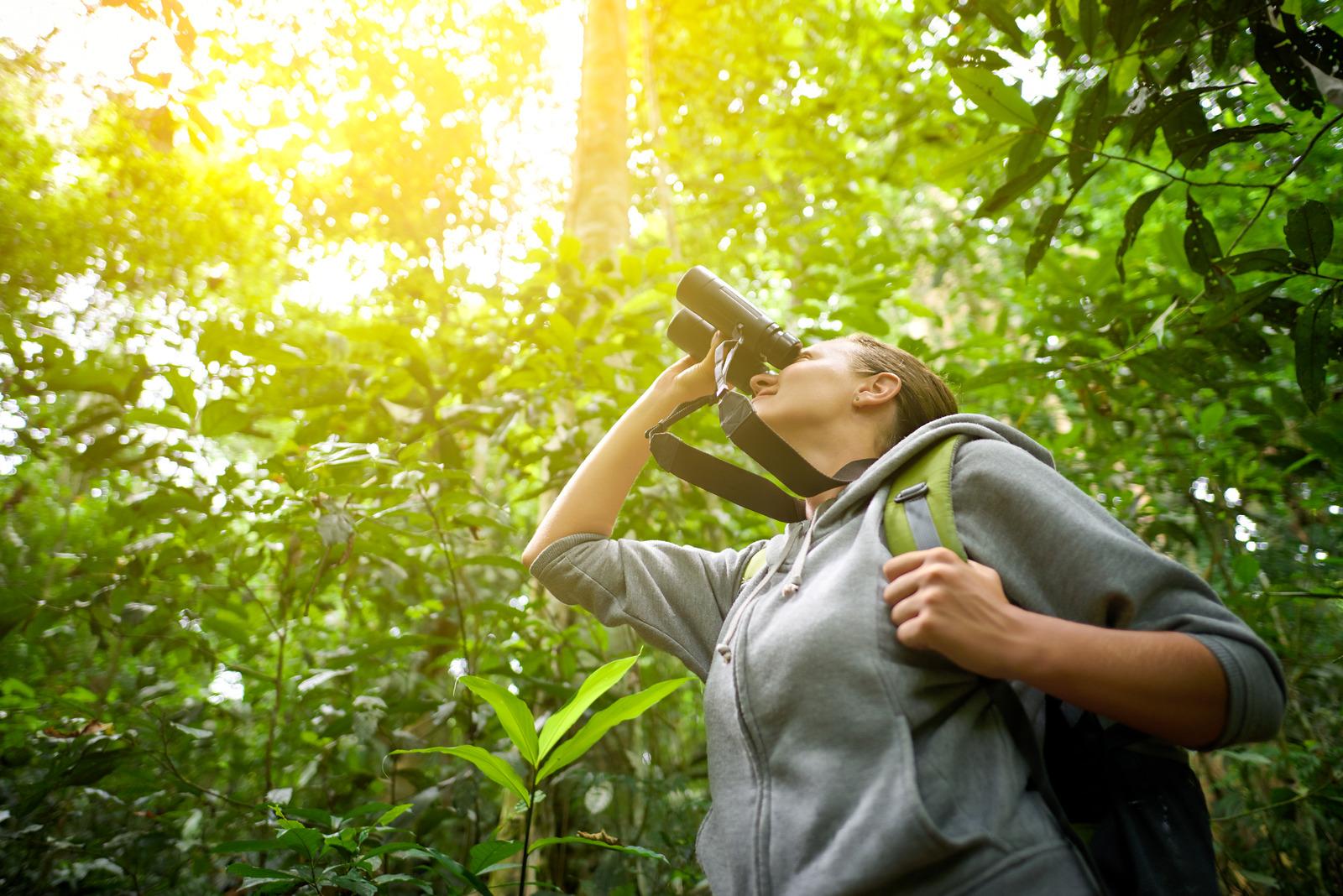
Our Happiness and Wellness Initiative shares "Some Good News" from the SPH and our extended community. You can submit your own good news by email to: happyandwell@umd.edu.
People are finding joy in backyards and in local, state and national parks through bird watching. Observing and listening to the variety of birds, both common residents and unique visitors, is a way to tune in to nature and experience the benefits this can bring to personal and collective well being. While some have a history of birdwatching stemming back to childhood experiences with their family, others started bird watching during the pandemic.
Cheryl Knott started paying attention to birds and their songs when she was growing up and spending time with her Mom. They would bird watch over a quiet cup of tea in the mornings on their front steps. “I've always been an ‘outdoor girl’ and enjoy nature,” says Knott, “perhaps even to a greater degree as time goes on. It struck me that the pandemic has taken away a great deal from us as a society, but am so thankful that it has not compromised our ability to get outdoors and enjoy the world around us." Knott and her husband enjoy backyard bird watching as well as nature walks and biking at locations like Blackwater Wildlife Refuge on the Eastern Shore where they photographed herons and an owl.
Boris Lushniak and his wife have enjoyed years of afternoon walks near their home, especially when they catch sightings of a local eagle family. Every year they witness the protective and caring nature of the eagle as it actively expands its nest and protects the newest additions to its family. This spring, on a hike at Great Falls National Park, they happened upon a new bird with brilliant colors, the painted bunting. This kaleidoscope of a bird, which is native to Florida and rarely found in Maryland, was a highlight of their bird watching experiences.
Soon after the pandemic hit, Steve Roth and his wife started paying more attention to birds when they began kayaking. It was a release from the chaos and they would watch herons, hawks, cormorants, and kingfishers on the lake. Then they realized that they had this small world of "everyday" birds in their own backyard. They started paying closer attention to their feeders, added a bird book, and a set of binoculars. They joined the Cornell Lab's Project Feederwatch program and started reporting what they saw.
Starting in late December, a small, olive-colored bird suddenly showed up and kept coming back. It took a few weeks and some correspondence with the Cornell Lab to identify it as an orange-crowned warbler, a rare bird for this area in winter. Roth posted the fuzzy picture and a description to the eBird site, not realizing that he posted it publicly. The next day, and for another two weeks, a small stream of birders would come to his house to catch a glimpse from the street (they were very respectful, he said)! It was stunning, and everyone was so happy to see this bird as it showed up every day.
Kathryn Vincent Carr started birding at the beginning of the pandemic as a way to keep her two elementary-aged kids engaged in the outdoors. “Little did I know how this simple thing would lead us to be a part of an amazing community of people,” expresses Kathryn. It has been life-changing to see my kids learn so much and to enjoy sharing their knowledge with others.
Birding has given them reasons to be still and mindful as well as an appreciation for the diversity of wildlife around them. Carr’s son Ryan shares, “Bird watching makes me feel excited because you never know what could be around the corner.” Her daughter Charlie says her favorite bird to look for is the Bufflehead, “They are cute and fun to watch.” On the day Ryan and Charlie offered these words of birding enthusiasm, they headed off for a half-day of birding at Black Hill Regional Park in Montgomery County Maryland, a spot frequented by birders for its bird hot spots that include more than 220 reported species.
Roth had another rare bird species sighting in mid-February. This time, early one morning, not one but three evening grosbeaks arrived at the feeder. They were easy to identify with their striking gold, black and white colors. They hung around for about 15 minutes and then left, presumably heading north, which is where they're usually found. Only a few birders came for that one - apparently, it's not the rarity that the warbler is!
Whether it’s backyard bird watching or listening to bird sounds, these stories from our UMD SPH community highlight how birds can improve our wellbeing. And at a time when there are so many uncertainties and life stressors, birds bring happiness and joy. As the sights and sounds appear, they are a reminder of all the beauty of nature, as well as the people with whom those moments are shared.